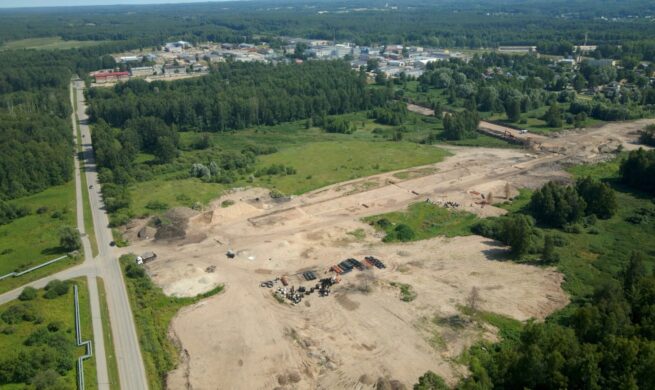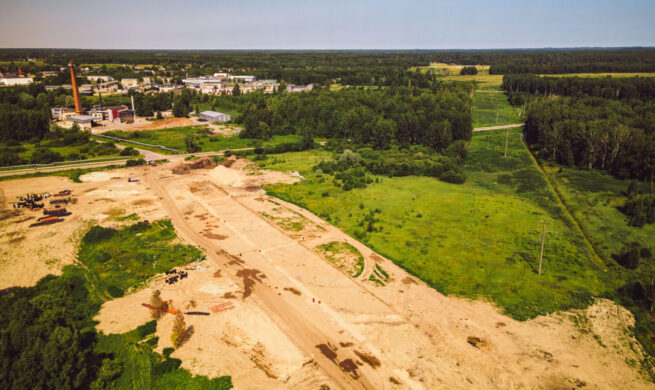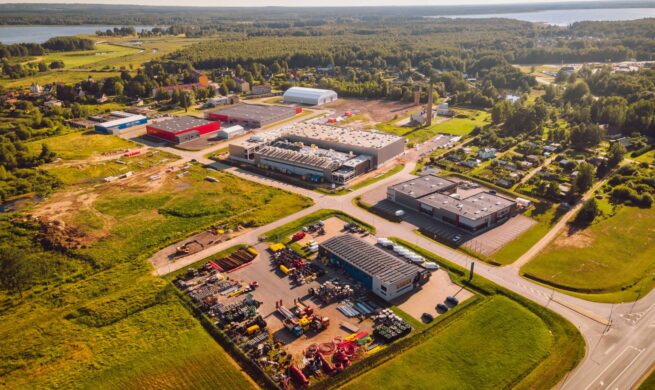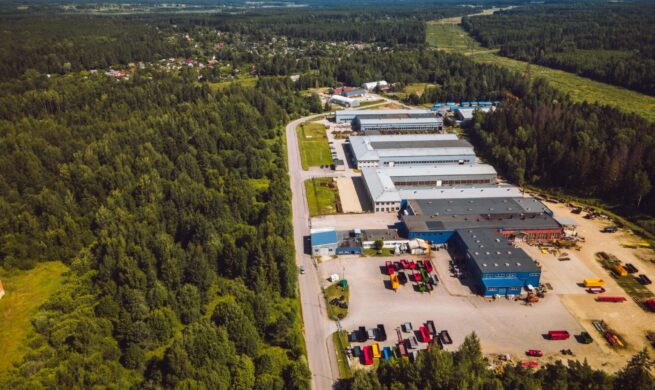The drone sector is rapidly developing in the European Union, as confirmed by the European Parliament. Studies indicate that 150,000 new jobs will be created in this sector by 2050. Ten years from now, the drone industry may make up 10% of the entire aviation market in the European Union. This accounts for ca 15 billion euros per year.
The local players say that the Estonian drone sector has every possibility to grow exponentially, thus greatly increasing local export. Additionally, the drone sector will receive a piece of the hundreds of billions of euros in play in this sector every year. “The drone market will grow to 50 billion euros by 2026 and I see a fantastic opportunity for export; Estonia as a whole has the possibility to benefit greatly,” assured Marek Alliksoo, CEO at SKYCORP OÜ, a company that develops hydrogen drones in Estonia.
Alliksoo believes that Estonia will become one of the most prominent development and operating destinations in the drone industry in Europe. “There is a great deal of potential in drones that perform logistics or gather data, air taxis that transport people or hydrogen and electric aviation,” he shared his thoughts. Invest Estonia’s Business Development Manager Raido Lember agrees. “Estonia has a good chance to become a unique drone development centre if they collaborate and innovate with universities in Tartu and Tallinn.”
A small nation has powerful advantages
Alliksoo believes that a unique way of thinking compared with other European nations will make Estonia a leader in the industry. “Our first option is not looking for justification for why we can’t do something; our country’s regulatory aspect is simple and supportive regarding unmanned tools,” he clarified.
Additionally, a clean and underutilised airspace provides support to the Estonian drone industry. “Drone mapping is rather straightforward over Estonia’s largest cities. It provides many opportunities for further development, collection of existing use-cases and raising awareness,” said Alliksoo. “Therefore, we don’t have the obstacles other countries have in these fields.”
Furthermore, Estonia will benefit from being a small country. “This provides us with an important competitive advantage, which is speed – we are able to do things nationally, while at the same time, our competitors can only operate regionally,” said Alliksoo.
Helen Kalberg, Marketing Manager at Tartu City Government, represents the public sector and she added that Estonia’s high technological level is also a competitive advantage. “The interest in the drone industry is at a high level in higher education institutions and they wish to train more specialists. Versatility exemplifies Estonia because we are a small country, information is passed on quickly and there isn’t too much bureaucracy,” she assured. Likewise, the know-how in this sector is at a high level, and if resources are used correctly, the drone industry could develop into an ‘Estonian Nokia’ type of venture,” Kalberg was certain.
Serving cocktails, governing crises and controlling the border
According to Alliksoo, success stories in the ground-based unmanned transport field or logistics field show that Estonia has a favourable regulatory framework. “Auve Tech, Cleveron and Starship Technologies are but a few examples,” the expert noted. “Estonia has a number of industry leading companies in the drone sector,” Alliksoo added.
The companies Alliksoo named demonstrate their own success every day. For example, a few years ago, Cleveron showed near Lake Viljandi how they are able to use drones to sell cold cocktails to clients. Orders were completed in less than five minutes, and by doing so, they showed the world another area in which technology is able to replace human labour.
As the coronavirus spread, the local drone industry proved its worth once again. Threod Systems drones were used to support the Estonian Police, as well as the healthcare sector, by informing the public about current restrictions via drone. The drones also transported coronavirus tests to the mainland from the island of Saaremaa.
Krattworks has developed technology that can be utilised in firefighting efforts, meanwhile EU drones allow Estonia to shine at its Eastern border – Estonia’s eastern border is the most wisely guarded border in the European Union. “Using drones allows us to nip incidents in the bud and react to them as soon as possible,” said Helen Neider-Veerme, Head of the Bureau at Border Police, three years ago. She also stated that this technology is of great help in monitoring and detecting what occurs at the border.
Kalberg lists a few other success stories: Milrem Robotics, a well-known company in the defence industry, as well as SKYCORP, led by Alliksoo. “The latter manufactures hydrogen-powered drones. The company recently signed a partnership agreement with French company Drone Volt. SKYCORP’S new generation technology will affect ecological footprint, vehicle weight as well as autonomy,” she explained. She also lists Hepta Airborne as a success story – this company develops aerial surveillance of power lines in cooperation with Elektrilevi.
Limitless potential
Alliksoo states that the greatest success story in the Estonian drone industry is participating in the SESAR JU Gulf of Finland U-Space project as well as in the subsequent Gulf of Finland 2.0 project. “Both projects are quite unique; in the latter project they are planning to implement an air taxi service and apply it across the Gulf of Finland between the two countries – this would be an unbelievable achievement on the world stage,” the expert believes.
He adds that three Estonian drone companies are supported by the European Space Agency’s business incubation centre. “Even today, we don’t really comprehend the scope of this market,” Alliksoo noted. He provided an example – Nordic countries are developing 6G mobile networks in order to more successfully take advantage of unmanned aerial traffic. “I can’t wait until our network operators discover this niche.”
New and comparable success stories should be further supported by Tartu’s ambition of building an area in which to develop and test drones in collaboration with the Estonian Aviation Academy, Tartu Airport, the University of Tartu as well as Tartu Biopark. SKYCORP also collaborates with the City of Tartu. “We have mapped out a number of existing use-cases in collaboration with Tartu City Government, in which drones are able to be used to create added value as well as resolve actions better, faster and automatically, especially those that are currently completed manually,” Alliksoo concluded.
Do you wish to learn more about Estonia’s business opportunities or to invest in Estonia? Send us an enquiry via e-Consulting and our investment advisor will contact you soon to arrange a meeting.



